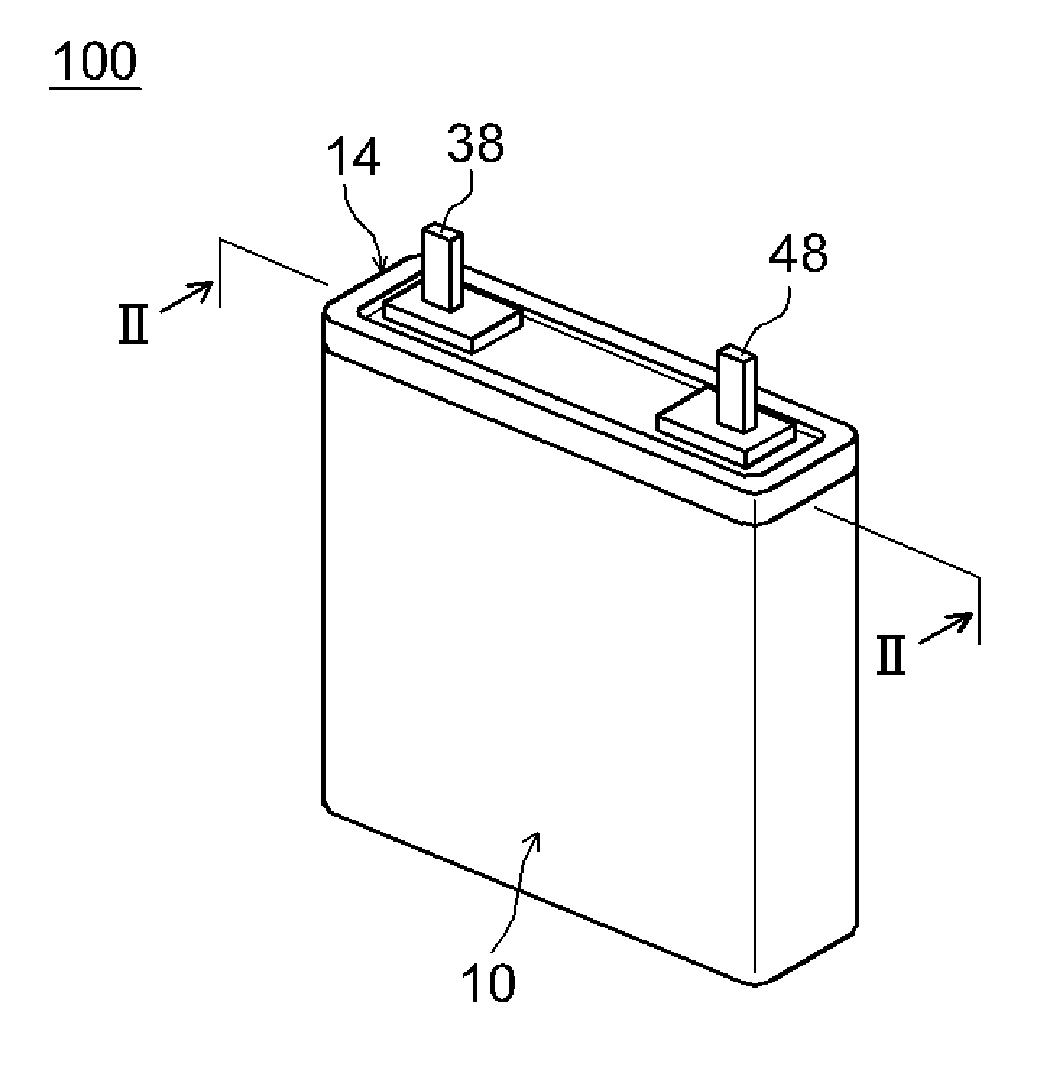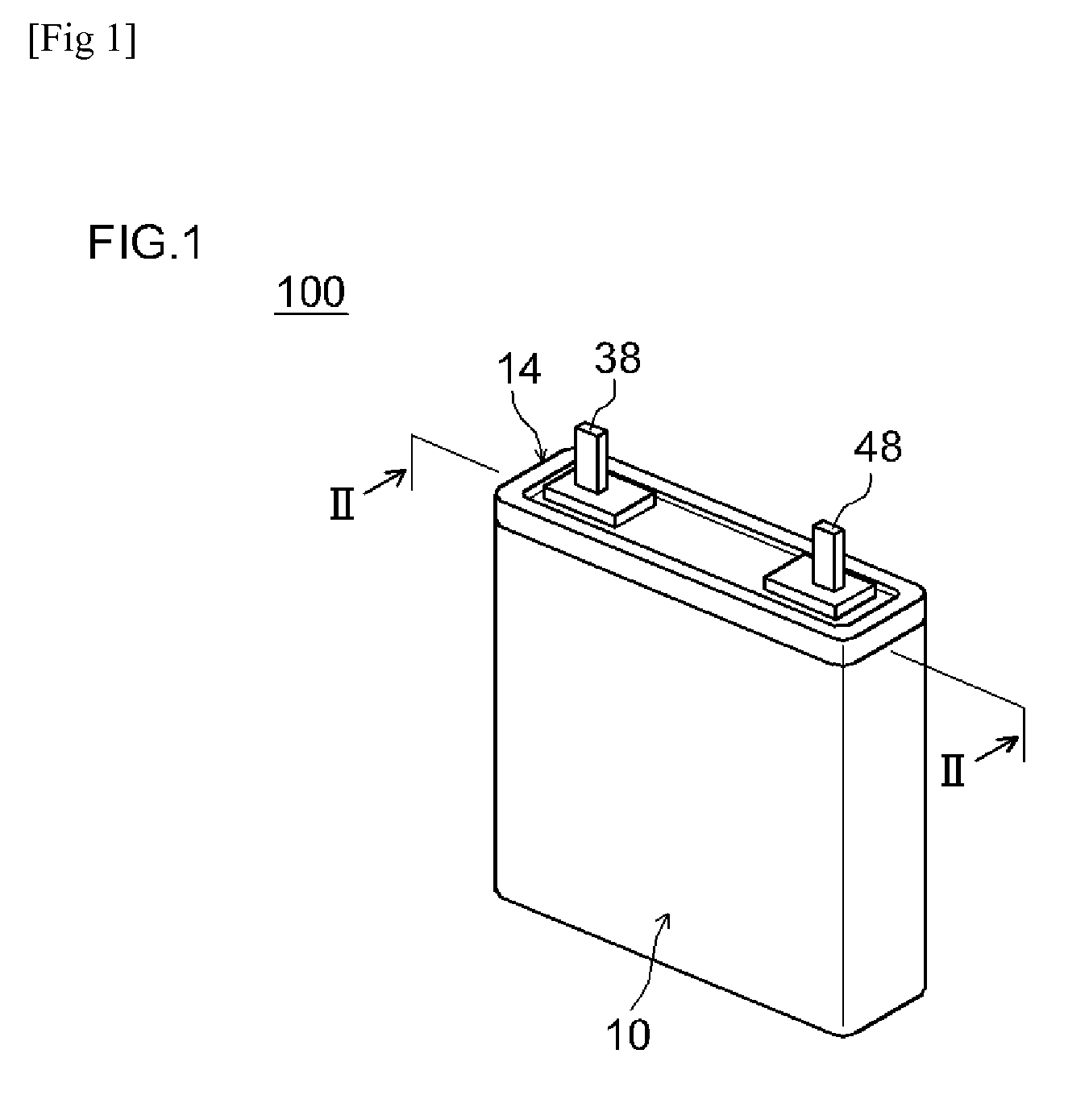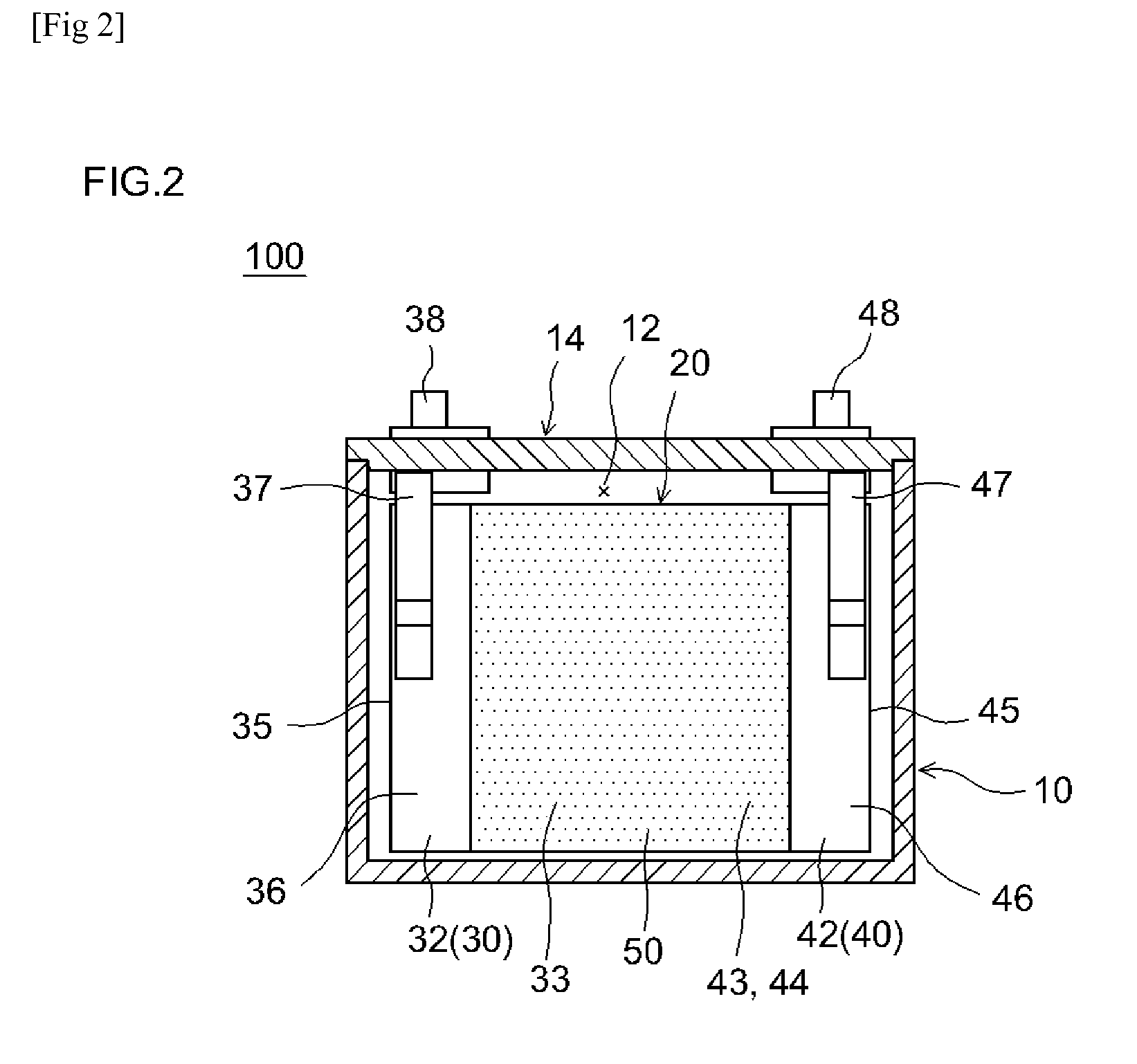Lithium secondary battery and manufacturing method therefor
a secondary battery and lithium ion technology, applied in the field of lithium secondary batteries, can solve problems such as increasing internal resistance, and achieve the effects of reducing internal resistance, excellent battery characteristics, and reducing internal resistan
- Summary
- Abstract
- Description
- Claims
- Application Information
AI Technical Summary
Benefits of technology
Problems solved by technology
Method used
Image
Examples
example
Fabrication of Lithium Secondary Battery Negative Electrode
[0072]The negative electrode (negative electrode sheet) of the lithium secondary battery of the example was fabricated in the following manner. Specifically, a negative electrode active material layer was first formed in order to form the negative electrode layer (negative electrode active material layer and insulating layer) on the surface of the negative electrode collector. The composition for forming the negative electrode active material layer was prepared by mixing natural graphite with a mean particle size (median diameter) of 10 μm as the negative electrode active material with styrene-butadiene rubber (SBR) and carboxymethyl cellulose (CMC) in deionized water such that the mass % ratio of these ingredients was 98:1:1. Then this composition was applied to both surfaces of a copper foil approximately 10 μm thick as the negative electrode collector such that the total applied amount (as solid content) was approximately...
PUM
| Property | Measurement | Unit |
|---|---|---|
| diameter | aaaaa | aaaaa |
| diameter | aaaaa | aaaaa |
| median diameter | aaaaa | aaaaa |
Abstract
Description
Claims
Application Information
 Login to View More
Login to View More - R&D
- Intellectual Property
- Life Sciences
- Materials
- Tech Scout
- Unparalleled Data Quality
- Higher Quality Content
- 60% Fewer Hallucinations
Browse by: Latest US Patents, China's latest patents, Technical Efficacy Thesaurus, Application Domain, Technology Topic, Popular Technical Reports.
© 2025 PatSnap. All rights reserved.Legal|Privacy policy|Modern Slavery Act Transparency Statement|Sitemap|About US| Contact US: help@patsnap.com



